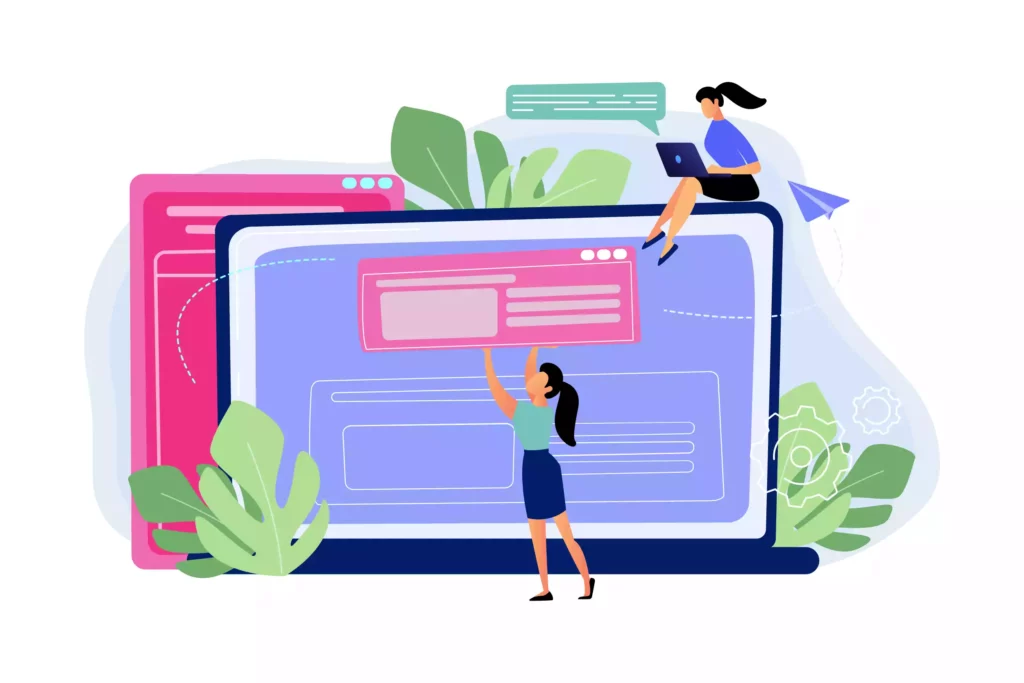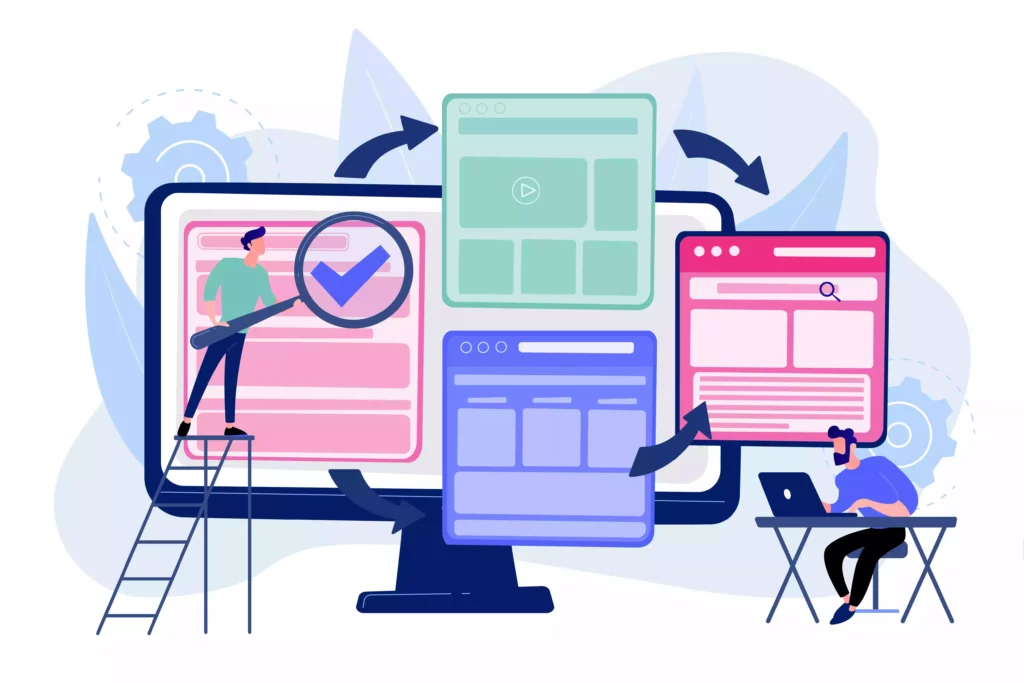Introduction
What is On-Page SEO?

On-Page SEO covers everything that you do to optimize your website content page to enhance search engine crawling and indexing. It has to do with both the content and the HTML source code of the page unlike Off-Page SEO which deals mostly with the backlinks and off the page activities/signals.
Why It Is Important
The traditional SEO practices still hold good and are extremely important. Google’s own reports testify for its importance.
Search engines rely on Latent Semantic Indexing (LSI) keywords and other keywords from the title and content to read and rank your website and although they are smarter than they were, they still for the most part judge a website based on the rules of SEO.
Google still reads for keywords in your content that is called crawling. And according to surveys and studies, there is a correlation between the keyword-rich titles and sites that rank higher in the SERPs to a large extent. If you observe, most sites that feature in the first page of the search results for your keyword are bound to contain your search keyword as well.
Now that we have enough proof, it is safe to say that On-Page SEO plays a crucial role in determining your websites ranking in the SERPs. But it is more than just cramming keywords everywhere.
Optimizing On-Page SEO

Now, very evidently, keyword research is the heart of it all. And there is an entire blog dedicated to it which by now, you have completed. With good knowledge of the types of keywords, where & how to find them, how exactly do you use them to optimize your website content? How much is too much and how to use them is what follows.
Use Your Target Keyword As Early On As Possible
Google prefers websites that have their target keyword within the first 100 words or so approximately, basically the text that surrounds the title. So use your target keyword as early on as possible in your page for better results. And it makes sense as well because if your website is about say losing weight, why would you first use the word midway right?
This is one of the old-school SEO practices that still does good to your website and Google in helping read and understand what your website is all about.
Page Titles Go All H1
Wrap all your page/blog/website titles in the H1 tag so that
- It enhances readability.
- Google says so.
Yes, it helps distinguish sections in your page clearly and Google has supported the fact that heading tags help Google understand “the structure of the page”.
Some platforms that allow users to create websites like WordPress set the heading, H1tag by default. But not all platforms do that. So ensure that your main titles are of the format H1.
Similarly, the subheadings or subsection titles can go in the H2 tag and include your target keyword in at least one of the subheadings.
Although the H2 tags don’t matter as much in terms of Google’s crawling ability, it has an impact on the overall performance and likeability of your website.
Keyword Frequency
Keyword frequency, the words literally translate the meaning: the number of times the target keyword occurs in the page. Now some may argue and deny that it does not work like that. But the pros can and will tell you otherwise.
Let us consider the logic behind it for a second and judge for ourselves, shall we?
So when Google crawls and comes across the target keyword say once or twice, and decides that is what the content is about, it is likely to go wrong. But if the keyword occurs multiple times in a way that is necessary and is not overused, then the search engines stand a lesser chance of going wrong about the content of the website hence improving the chances of your page ranking higher in the SERPs.
It is very important to keep in mind, keyword stuffing: overusing or mentioning the target keyword unnecessarily. It is more about using the keyword a few times to enable Google to read the content and affirming what the page really is about.
Use Outbound Links
If your website has other pages based on the same content, then provide links to that. Find other websites that deal with the same domain as yours or the same topic your page is on and link them. This will also help with Off-page SEO when you strike a returning-favours kind of relationship to gain backlinks as well.
Ensure that they are trusted, quality sources because these links help Google understand the topic your page is based on and increase the credibility and quality of your page.
It shows that your page has real value content helping search engines rank you higher.
The effect of external or outbound links is a proven one compared to ones that do not contain external links.
Optimizing URLs
How do you create an SEO friendly URL? There are a couple of things that help.
- Keep the URLs short. The appropriate URL length is 75 characters long.
- Make it keyword-rich. Ensure that it contains the target keyword.
Longer URLs make it difficult for search engines to index them hence affecting the website’s ranking. Try avoiding too many slashes in the URL as well.
Ex: Status of running trains – https://pnrstatus.org.in/running-train-status
Coach position – https://www.trainman.in/coach-position
Optimizing Title and Description
Title of your website still plays a huge role in determining SERP ranking and aids Google in crawling, so it pays to optimize your title.
The description surrounding it referred to as meta description helps users decide if this is the website they want to click on to find what they are looking for. So, you’d better optimize that too.
It only makes sense that the title of the website contains your target keyword. What would be even better is to try and incorporate it as close to the beginning of the title as possible since that does help Google understand what your website is about quicker. It can just be in the title but closer to the beginning, the better is all we are saying.
Use keywords like “best” and “free” so that your website titles also qualify for long tail versions of your target keyword, like “best SEO tools for..” or “Free SEO tools” etc.,.
Ensure that the meta-description of the page is keyword-rich and comparatively unique. Most times if some part of the content suits the context of your website better, Google might use that as the description emboldening the keywords that match the search query. But it is always a good idea to leave a good description of every page helping your website stand out in the search results. It also boosts your organic click through rate or CTR.
Creating SEO Content
Now while creating SEO content, some things are understood right? Like, the content has to be completely authentic, quality over quantity and satisfying searchers’ intent. But there are some things that we tend to overlook while in the run to create the perfect SEO content.
So here are some things to take care of:
I. Keyword Density & Proximity.
There are a million websites that are talking about the same things that you are. So what makes you stand out? Try and incorporate content that is fresh, maybe a fresh perspective, a new strategy or it could just be presented really well which is great UI/UX. You could also just list out some really valuable resources instead.
But all this while, just remember to write your content in such a way that the target keyword isn’t overused. Because keyword density is a major thing, both in determining the quality of your page as well as in determining the readability to your users.
Keyword density is basically the number of times your target keyword appears in your page.
Keyword proximity is how closely the keywords are mentioned from each other.
These are two extremely important factors that we cannot stress enough about, because you could have THE best content ready but if these two factors haven’t been taken care of, then it dilutes all the efforts put in.
The ideal keyword density ranges from anywhere between 2 to 10% and although that might seem pretty high, it does make sense to use them when it makes sense and also when it is generic. As long as it doesn’t seem forced or spammed, you are good to go!
So you learned how to use them. But where do you use these keywords?
To optimize the use of keywords, spread them across your title, URL, meta description, at the beginning of your article and at the end and obviously in the heading tags.
Be sure to use them in the anchor tags and image alt tribute as well, since we already learnt how important those are and how Google uses them to figure the content your website holds.
II. Internal & External Links
Have a strong page. When we say strong here, we mean in the sense that that acts as the strength of your website, like where most conversions happen. One way to do this is having content that satisfies the users’ search intent. When one finds what they are looking for, the chances of conversion are higher. Include an optimum number of internal and external links. Your page must be of value. So include and share resources that personally find valuable.
When you share a link that leads to another page based on the same content on your own website, it is called internal linking or inbound link.
When the link leads the user to a different website with the same content, it is called an external or outbound link.
When a page has a number of these links, there are 2 things that happen:
- Google gets an idea of what your page is REALLY about.
- It tells google that your page is rich with valuable content and hence enhances your ranking in the SERPs.
So that is a double win!
III. Use Title Tags With An Emotion/Question
Make your title either a question or add an emotion to it. Titles that are in the question format work because mostly users are looking for info and they just want to know what something means or what it does. So those work in favour of CTRs. The ones with some emotional punch to them draw readers as well since it helps relate. No, don’t be cynical or go overboard and make it look like a clickbait, but it is definitely better than a dry heading for the sake of it.
For example, someone looking for the meaning of nofollow links might just be looking for the meaning, so a title like “What is a Nofollow Link?” is definitely more attractive.
IV. Chunk Out Information
Now who would want to read an article that seems endless right? Our brains tend to gravitate towards things that seem easily accomplishable. And that is what chunks of content do. When you see that an article is divided into sections, the chances of you reading that is higher than one without. What this does is, I) help you find a chunk that suits exactly what you were looking for and II) help you finish reading the bit, easily tricking the brain into feeling accomplished. So you might even end up reading the entire article without realising.
Also it is easier to read and understand something when you know why or what the aim of this piece of content is.
V. Nofollow Or Dofollow?
Use dofollow links only. Nofollow links are visible to the users but not to the search engines. It means no authority will be followed from the current website to the linked website. This deprives your website of the opportunity to evaluate or mark it as authentic.
Bonus Tips
Images
Always, always, use original or unique images as a rule of thumb. Never use duplicate ones. Or use copyright free images. Never use ones that need credit and not credit them and spiral into that whole mess. It hurts both your website quality and ranking.
1.1 Compress Your Images
This one plays a major factor in determining Mobile users’ experience. Because the bigger the image, the longer it takes to load. More compressed images also ease the load on the hosting server, positively impacting server speed and everyone’s happy.
1.2 Image Attributes
Use target keywords or slight variations of them in the Image file name, image title and image alt text. Google uses image alt text to analyse what the image is about. So there really is no choice there but to mention as accurately as possible what it is about. The file name, though, need not be descriptive. It can just be a word or two with the keyword.
Social Media Sharing And Interactive Forums
A great way to boost your website quality is to allow consumers to ask questions or leave feedback. Apart from contributing to ideas to make your content better, it also talks about the context of your website which is great for you. It gives people something to read and linger on your website for longer.
Having a call to action that allows instant ability to share is another contributor to get those clicks and views on your page.
Having a box like the above image helps improve your reach by a large extent.
So those are some hacks and tips to helpyour On-page SEO. We hope you found this SEO blog useful. Let us know what you found most insightful in the comments below.






